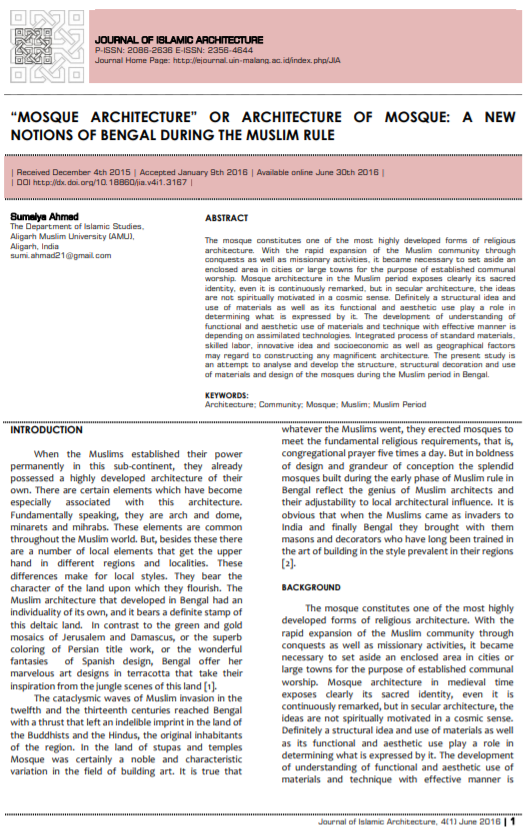
The mosque constitutes
one of the most highly developed forms of religious architecture. With the
rapid expansion of the Muslim community through conquests as well as missionary
activities, it became necessary to set aside an enclosed area in cities or
large towns for the purpose of established communal worship.Mosque
architecture in the Muslim period exposes clearly its sacred identity, even it
is continuously remarked, but in secular architecture, the ideas are not
spiritually motivated in a cosmic sense. Definitely a structural idea and use
of materials as well as its functional and aesthetic use play a role in
determining what is expressed by it.The
development of understanding of functional and aesthetic use of materials and
technique with effective manner is depending on assimilated technologies.
Integrated process of standard materials, skilled labor, innovative idea and
socioeconomic as well as geographical factors may regard to constructing any
magnificent architecture.The
present study is an attempt to analyse and develop the structure, structural
decoration and use of materials and design of the mosques during the Muslim
period in Bengal.
The present study is an attempt to analyse and develop the structure, structural decoration and use of materials and design of the mosques during the Muslim period in Bengal.
I agree to the terms outlined below:
You agree to upload and assign Mosqpedia Database the rights to use the content worldwide and in perpetuity across all current and future media platforms. Mosqpedia Database may edit, copy, adapt and translate your contribution.
The content will be distributed under the Creative Commons Attribution-Deed – Attribution-NonCommercial-NoDerivatives 4.0 International – Creative Commons
All data will be stored in line with data protection regulations.